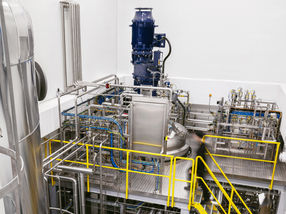Study about World RNAi Markets: Current and Future Outlook
From being a molecular novelty, ribonucleicacid (RNA) interference (RNAi) has swiftly become the focus area of biotechnology and pharmaceutical companies. RNAi is, today, regarded as a breakthrough technology platform for applications in research, target validation and therapeutics.
One method of treating disease is through inactivating the malignance of the disease-causing gene. Gene silencing by RNAi has now been identified as a crucial technology for target validation and therapeutics. By targeting and interfering with messenger RNA (mRNA), RNAi technology blocks the expression of the proteins implicated in disease progression.
Currently, the nascent RNAi market is relatively limited in size and revenues. "The market for RNAi is, however, set to witness rapid initial growth because of its speedy adoption by researchers and for drug target validation by pharmaceutical and biotechnology companies," comments Dr. Raju Adhikari, Pharmaceutical & Biotechnology Analyst at Frost & Sullivan.
"Once the delivery of short interfering RNA (siRNA) and patent issue is sorted, and the initial therapeutic potential provided, the market will be driven mainly by pharmaceutical and biotechnology companies involved in RNAi-based therapeutic development and drug target validation," adds Dr. Adhikari.
The development of RNAi technology is simultaneously set to receive added impetus from the boom in genomic and proteomic studies. RNAi's uptake is also expected to be supported by its profile as a reliable and effective technology with reduced toxic and off-target outcomes. The anticipated change of the patents and license situation is likely to encourage more companies to offer RNAi technologies.
In 2003, global RNAi market revenues were estimated at USD 48.0 million. Of the three application markets- basic research, target validation and therapeutics- the use of RNAi in target validation is expected to be the largest over the long term. In 2010, target validation is estimated to generate USD 146.4 million or just under 50 per cent of total RNAi market revenues, followed by research with USD 97.6 and therapeutics with USD 56.0 million.
RNA oligonucleotides are set to be the largest segment of the RNAi market in the long term, representing an estimated 56 per cent share of the market in 2010. The vector-based siRNA segment is projected to account for 18 per cent share of the total market at the same point, closely followed by the RNAi therapeutic segment with 17 per cent and the RNAi contract services segment with a 9 per cent share.
Forecast to grow at an annual average of 31.5 per cent over the 2003 to 2010 period, the total RNAi market is set to accumulate USD 328 million in worldwide revenues. Spurred by its potential, the number of biotechnology and pharmaceutical companies involved in the technology is also expected to surge.
Presently, there are over 50 companies in the United States and Europe active in the RNAi market. RNAi reagents and research tool providers currently generate the largest share of revenues. Several companies are also using RNAi as drug target validation tools or for developing therapeutics.
U.S.-based companies currently dominate the competitive arena. Their ascendancy is likely to wane over the next five years as companies specialising in RNAi emerge in the Asian markets. Indeed, while the United States and Europe currently represent the top two RNAi markets, accounting for a 55 per cent and 30 per cent share respectively, the focus is likely to shift to new regional markets in future.
Even as a market buzz surrounds RNAi, Dr. Adhikari urges caution. "It is now clear that RNAi - that was a molecular curio only five years ago - is a darling of the biotechnology and pharmaceutical world. What remains to be seen is whether RNAi will unlock a floodgate of new, effective genome-based therapies and fulfill the yet undelivered promises of biotechnology."
Topics
Organizations
Other news from the department business & finance

Get the life science industry in your inbox
From now on, don't miss a thing: Our newsletter for biotechnology, pharma and life sciences brings you up to date every Tuesday and Thursday. The latest industry news, product highlights and innovations - compact and easy to understand in your inbox. Researched by us so you don't have to.

























































